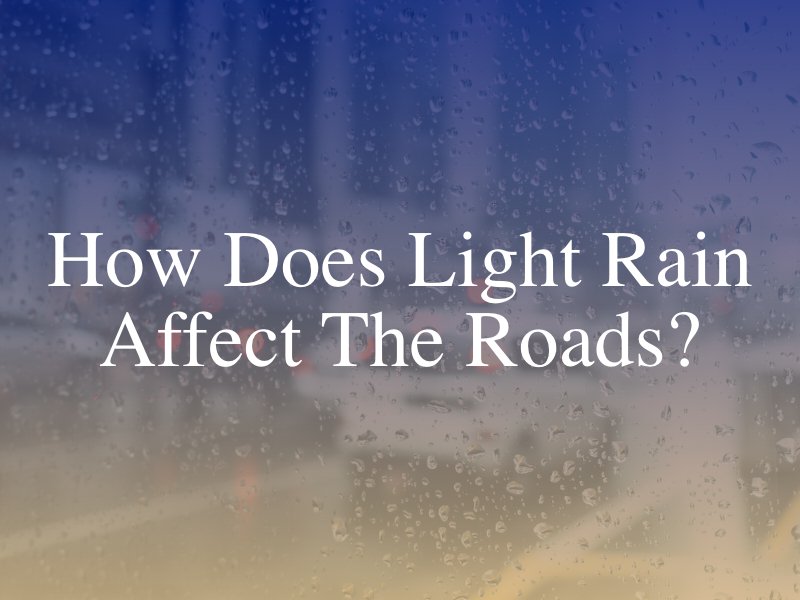
How Does Light Rain Affect the Roads?
Colburn Law
Posted in Car Accidents on March 25, 2023

Rainfall is a regular weather event in the state of Washington, and it can have a significant impact on the condition of roads. Frequent rain showers can accumulate to cause standing water, resulting in hydroplaning, and loss of tire traction. Even light rain can create slippery road conditions that may increase the risk of accidents.
Unfortunately, not all drivers treat rainy weather with the care and caution that it deserves. Staying informed and taking necessary precautions can help drivers protect themselves and others on the road, especially during hazardous weather conditions.
Light Rain Can Increase the Risk of Road Accidents
A study conducted by the North Carolina Institute for Climate Studies has found that even light rain can increase the likelihood of fatal car accidents by 27%, while moderate to severe precipitation can result in a 34% increase. The study analyzed over 125,000 fatal accidents across the United States between 2006 and 2011 and examined weather patterns at the time of the crashes using high-resolution radar data analysis.
This study highlights the danger of light rain and drizzle, which may be underestimated by drivers who do not perceive the weather as a significant threat. As a result, they may fail to exercise the same level of caution while driving in light rain as they would during stormier conditions.
Tips for Driving Safely in the Rain
Driving in the rain can be challenging, even for experienced drivers. Reduced visibility, slippery roads, and longer braking distances are some of the risks associated with driving in wet conditions. However, there are steps that drivers can take to ensure their safety on wet roads:
- Reduce Your Speed: When it’s raining, slow down to reduce the risk of hydroplaning, skidding, or sliding on wet roads. Driving slower also gives you more time to react to unexpected situations.
- Keep a Safe Distance: The increased stopping distance required on wet roads means that drivers should maintain more space between their vehicle and the one in front of them. Keep a distance of at least 3 seconds between cars.
- Turn on Your Headlights: Due to low visibility, it’s a good idea to turn on your headlights when it’s raining, even during the day. This can improve your visibility and help other drivers see you.
- Avoid Sudden Maneuvers: Abrupt turns, acceleration, or braking should be avoided as much as possible when driving in the rain as they can cause skidding or hydroplaning.
- Use Windshield Wipers and Defrosters: Make sure that your windshield wipers and defrosters are in good working condition, as they can help improve visibility during rainy weather.
- Stay Alert: Be vigilant and aware of your surroundings while driving in the rain. Watch out for standing water, potholes, and other potential hazards that can cause accidents.
What to Do If You Are Injured in a Rainy-Day Car Accident
While certain tips can help reduce the chances of an accident, not all drivers are so careful. If you are injured in a rainy-day car accident, you may be eligible for an insurance claim or lawsuit against the at-fault driver.
In these situations, it is important to call 911, seek medical attention, and collect as much evidence as possible. Then, contact a Washington car accident lawyer to discuss your legal options. Your attorney will carefully evaluate your case and identify your optimal path to recovery.



